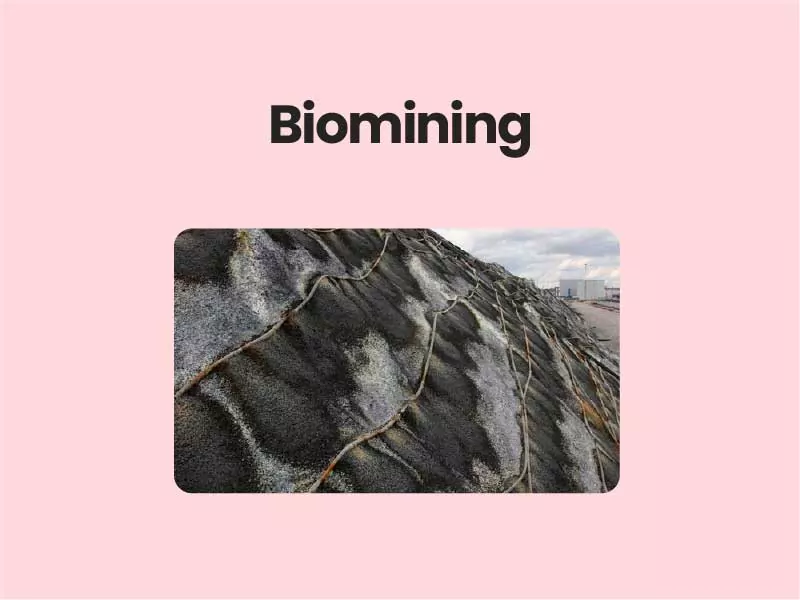
Biomining
Biomining can be defined as the extraction of minerals from ores by using microorganisms. The microorganisms actually facilitate the extraction of metals from sulfide or iron-containing ores. Metals solubilization process is involved in biomining and it is a combination of microbiology and chemistry. Bioremediation is the use of microorganisms (bacteria and fungi) to degrade the environmental contaminants into less toxic or nontoxic forms
Methods of biomining
- Bioleaching: A classic method of biomining. In this method, low-grade ore is dumped into a heap called leach pile and then soaked with a weak sulfuric acid wash. Then acid reacts with the ores sulfide matrix and encourages the growth of bacterial strain which starts to degrade ore and releases minerals or metals in fluid form.
- Bio-oxidation: it is widely used for the extraction of gold from ores. This process involves exposing the ore to bacterial oxidation which degrades the insoluble pyrite and arsenic components as it is a precious metal only removal of interfering metal sulfides from ore. Actually, bio-oxidation leaves metal in solid phase and solution is discarded.
- Common metals: Metals for which this technique is employed included Copper, Nickel, Zinc, Uranium, Gold and Silver.
Read Also Mukurthi National Park
Biomining in solid waste management
- It can be used to clear oil spills in sea and pollution from the soil, groundwater, surface water and air. In GURUGRAM Haryana this technique has been effectively use to clear hills of garbage without any ill-effects. Also with zero emission of harmful gases(Methane, Hydrogen sulphide and ammonia ) and Leachate.
- It can be used for wastewater treatment to industrial waste.
- It can be used for hydrocarbon contamination (PCB, Pentachlorophenol, and Trichloroethylene etc.).
- It can be used for storage tanks and pipes, landfills and pesticides and herbicides.
- It can be used for the treatment of agriculture chemical waste (like thiazine and DDT) and inorganic like (Uranium, sulphur etc.).
Read Also Lokpal and Lokayukta
Benefits
- It allows us to recycle resources by extracting useful components from the waste such as metal, as compost in fertilizer etc.
- If some of the Heavy metals are not degraded it can produce toxic compound and these compound can create health hazard like asthma, lungs cancer etc.
- Normal Processes of incineration requires a lot of energy whereas these processes do not need energy at all.
- These processes can be in situ and ex-situ.
- It is Eco-friendly and environmentally sustainable also after using this technique we can use the contaminated land for other purposes.
Disadvantage
- Limited to bio-degradable compound.
- Not instantaneous.
- Factors must be maintained as it is highly specific.
- Products may be more persistent or toxic than the parent compound.
Conclusion
Our constitution provides us Right to health(Article 21, Article 48A. Protection and improvement of environment and safeguarding of forests and wildlife etc. and regarding this government has come up with Solid Waste Management Rules 2016. They experimented Bioremediation and Biomining in many cities in recent years under Raaginii Jaain, a national expert on the Government of India’s Swachh Bharat Mission, has developed a rapid bioremediation process for old dumps as well as new dumps in Nagpur, Gurugram, Gandhidham etc. and the result was very exciting.
Though these techniques will take a little longer time, it is environment-friendly. We should use it on a large scale and plan it in all of our schemes such as Smart Cities, AMRUT, HRIDAY and Swach Bharat Mission
Read Also P-8I Patrol Aircraft
Enroll today with the best civils service academy and take your first step towards your Civils journey.
Feel free to reach out to us for any inquiries, collaborations, or support. We’re here to help.

